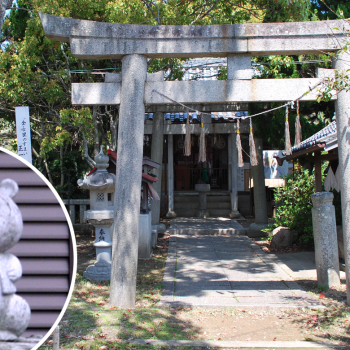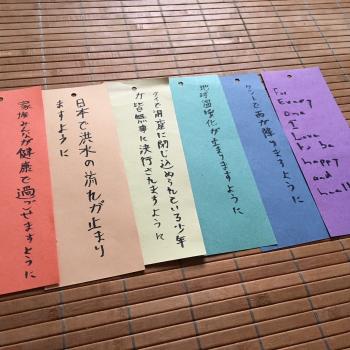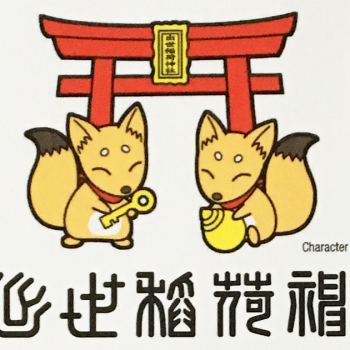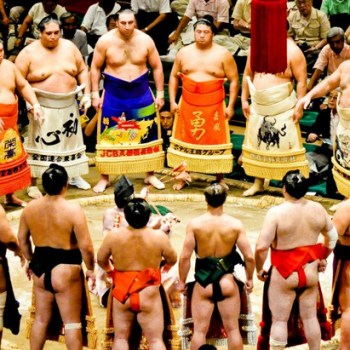February 12th this year is Hatsuuma, “First Horse Day Festival.” It’s an important observance for devotees of the Shinto deity Inari Ōkami, the kami associated with rice, prosperity and foxes. It celebrates the decent of Inari Ōkami to Inari Mountain in Kyoto, and special ceremonies will be held at Inari shrines throughout Japan, not least at Fushimi Inari Grand Shrine which is located at the foot of Inari Mountain.
To commemorate this day, I would like to share the stories of five Inari devotees from around the world. These devotees are all members of the Inari Faith International Facebook group, which has become a central hub of international Inari followers.
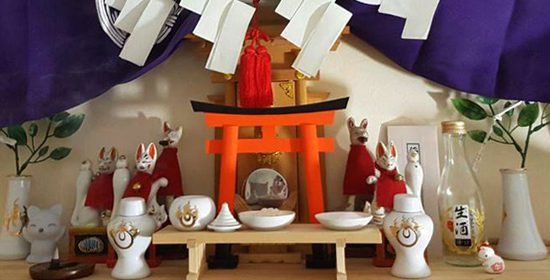
Matthew, UK: “The best part of Shinto is how much it reminds me to express gratitude for the little things on a daily basis”
“I have been a follower of Inari Ōkami for over 10 years now. I very much believe that they reached out to me in the form of dreams, symbols and blessings, years before I formally began to venerate them. Over the years, I slowly was able to put together a kamidana [Shinto home shrine] for Inari Ōkami and it is now the centrepiece of my room and a sacred space I make daily prayers (norito) and offerings at. Shinto to me is very much about being in touch with nature, the kami, the yearly cycles, as well as the overall condition and development of the human species. Being in the UK it can be difficult being Shinto because of the distance from the faiths home country and the language barrier, but also being taken seriously as a Shintoist due to out of date opinions that non-Japanese cannot practice it. For me, the best part of Shinto is how much it reminds me to express gratitude for the little things on a daily basis and that negative energy is not something to ruin our lives, but is something that can be dealt with and cleansed.”
(You can read more about Matthew’s path at his website, Fox of Inari)
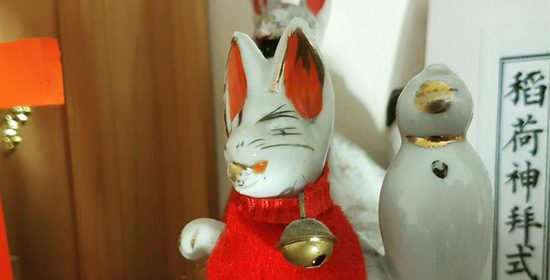
Bella, Australia: “I love that Inari doesn’t have a defined form”
“I live on a farm between Sydney and Canberra. I first learnt about Shinto when I was in High School (about 30 years ago). I don’t know why but it really resonated with me. I don’t belong to any particular shine. There are none near me! In fact I don’t know if there are any in Australia. I suppose I follow a very nature based version of Shinto. Around my property there are lots of large boulders. Some of them feel special. I often sit at the rocks and watch the sunset or the sky, the hills around me and talk or give gratitude to the kami. I have a small shine, not really a proper kamidana. But I leave offerings. Inari Ōkami is important to me as the forces controlling agriculture. I love that Inari doesn’t have a defined form. And …. well I just love foxes!”
Katriel, USA: “Sometimes Inari shows us the difference between what we know and what we think we know”
“I am a multi-faith practitioner due to venerating the God of my ancestors who is Source, and venerating spirits (such as spirits of places, or over particular actions / domains – trickster /wisdom archetypes in my case specifically). So within this, I honour Inari. But the way I conceptualize Inari is very similar to Kannon (a Buddhist deity). This is an entity who can teach us to seek compassion and to enact compassion in our lives, who listens to things like needs (shelter, companionship) and desires both. I just happen to think that this entity I call Inari also changes form and takes the form that would be most useful to teach, and sometimes Inari shows us the difference between what we know and what we think we know.
As such, I try to seek knowledge. I also try to explain what I know in terms a more Western audience might understand. I do presentations on aspects of Japanese culture when I can, largely at animation conventions, but well sourced. My liturgy is respect and compassion, of listening and conversation. In my practice telling the kami of your intentions and plans is great but having a conversation with your neighbor is great too.”
Alexander, Brazil: “Love, live, learn”
“My own devotion to Inari Ōkami is far from standard. I talk to her (or think I talk, from a more sceptical point of view), and follow her teachings. And since I have this direct access to her, I don’t feel the need for a kamidana, although at some point I might get one. She teaches me on how to act towards myself and others in my life, as well as about practical matters, from history to magic, and once summed up her teachings thus: ‘Love, live, learn’ and ‘always forgive.'”

Michael, UK: “I decided to go on a Shamanic Journey to meet Inari Ōkami in person”
“I had been doing some soul searching, looking around for a faith that fit me. I had tried many worldviews and none of them particularly stuck for me, but during my search I looked into Shinto, and the more I saw the more I liked it. But it was when I saw that there was actually a small scene of Shintoists outside of Japan that were also non-Japanese, that I turned to it. I had always liked the sound of it, but I had also always thought it was a ‘closed religion’, the sort that only certain people could become. But to hear that even non-Japanese people could get in on this very interesting and very beautiful religion was what clinched it for me.
So when I discovered how much Shinto resonated with me, I started looking into how I could practice it. I come from an occult background, so rituals are very important to me. But first I had to decide what Kami to venerate. And that is when I found Inari Ōkami. A kami of mystery, of prosperity, of industry, which would be especially useful to me as I was going into the working world from university when I discovered Them. So I got myself an Inari ofuda, set it up in my Kamidana and started praying and offering to it.
After a while, as I felt more and more comfortable praying to Inari Ōkami, I got the idea to use some of my previous occult experience in my practice: I decided to go on a Shamanic Journey to meet Inari Ōkami in person. Shamanic Journeying is a new-age concept that I had a lot of previous experience with, that can be summed up as a sort of guided meditation where you visualise entering another world and opening yourself up to encountering characters in this visualisation that are interpreted as spirits. So, I designed a journey to meet Inari Ōkami, which involved a visualisation of walking up a long winding stairway lined with red torii gates, which ended up leading to a large clearing surrounded by dark trees, and a small Inari shrine in front of a small pond. I did not stay long, and while I did not see or hear Inari Ōkami, I certainly did feel their presence; a sort of heavy, deep, slightly ominous feeling that I was being watched. Not really a dangerous or scary feeling, but certainly a feeling of being in the presence of something extremely old and powerful. So in the vision, I made my offerings, made a prayer to the kami to be with me in my life and made my exit. And to this day I consider that journey and that experience as my self-initiation into the mysteries of Inari Ōkami. And someday when I have the time and the drive, I hope to return to that mysterious grove of trees and its lonely shrine, and experience Inari Ōkami’s presence again.”
Pagan Tama would like to thank Matthew, Bella, Katriel, Alexander and Michael for taking the time to share their stories and pictures! If you are interested in Shinto in the UK, please join the Inari Faith International Facebook Group. You can also like the Pagan Tama Facebook page to keep up to updates on this blog.







